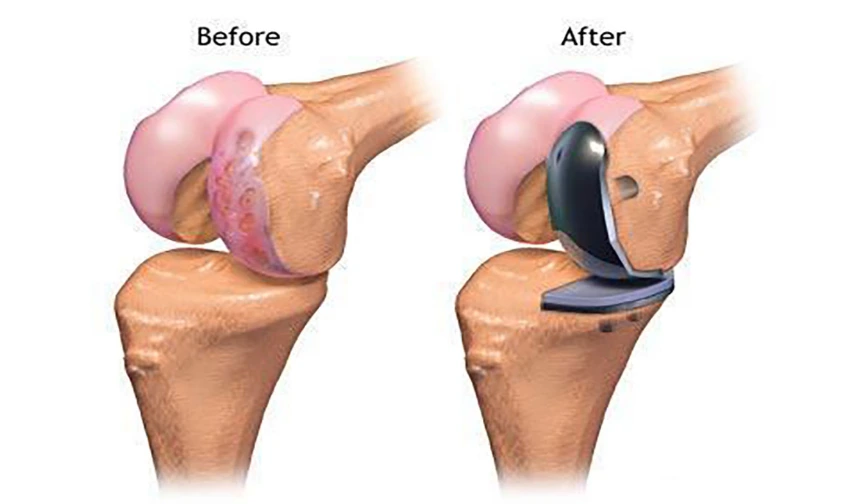Partial Knee Replacement Surgery

Partial knee replacement, also known as unicompartmental knee arthroplasty, is a surgical procedure in which only the damaged portion of the knee joint is replaced with an artificial implant, preserving the healthy areas of the knee. This procedure is an alternative to total knee replacement and is typically recommended when arthritis or damage is confined to a specific compartment of the knee.
Why is Partial Knee Replacement Needed?
Partial knee replacement is often considered for patients with osteoarthritis or other degenerative joint conditions where only one part of the knee is affected. It is usually recommended for individuals who:
- Have localized arthritis in only one section of the knee.
- Experience persistent knee pain that limits daily activities.
- Have not responded well to conservative treatments like medications or physical therapy.
- Have good knee function and ligament stability in the unaffected areas of the knee.
Benefits of Partial Knee Replacement
- Smaller Incision: Less invasive compared to total knee replacement, leading to a quicker recovery.
- Preservation of Healthy Tissue: Since only the damaged part of the knee is replaced, more of the natural knee structure and ligaments are preserved.
- Faster Recovery: Patients often experience a shorter hospital stay, less pain, and a faster return to normal activities.
- More Natural Knee Movement: Retaining the undamaged portions of the knee often allows for more natural motion compared to a full knee replacement.
Procedure
During the surgery, the damaged cartilage and bone from the affected compartment of the knee are removed and replaced with a metal and plastic prosthesis. The procedure focuses on the area of the knee experiencing damage, typically either the inner (medial) or outer (lateral) compartment.
Partial knee replacement can be performed using minimally invasive techniques, which reduces trauma to the surrounding muscles and tissues.
Recovery After Partial Knee Replacement
- Hospital Stay: Patients often spend 1-2 days in the hospital, though some may go home the same day.
- Physical Therapy: Rehabilitation exercises are started soon after surgery to regain strength and mobility in the knee.
- Return to Activities: Most patients can resume light activities in a few weeks, with full recovery taking several months.
- Longevity: Partial knee replacements generally last 10-15 years, after which revision surgery may be necessary.
Risks and Complications
- Infection: As with any surgery, there is a risk of infection.
- Blood Clots: There is a risk of developing clots in the legs following surgery.
- Stiffness: Some patients may experience limited knee mobility post-surgery.
- Wear and Tear: The implant may wear down over time, requiring revision surgery in the future.
Partial knee replacement is an excellent option for patients whose arthritis is limited to one area of the knee, providing pain relief and improved function without the need for total knee replacement.

